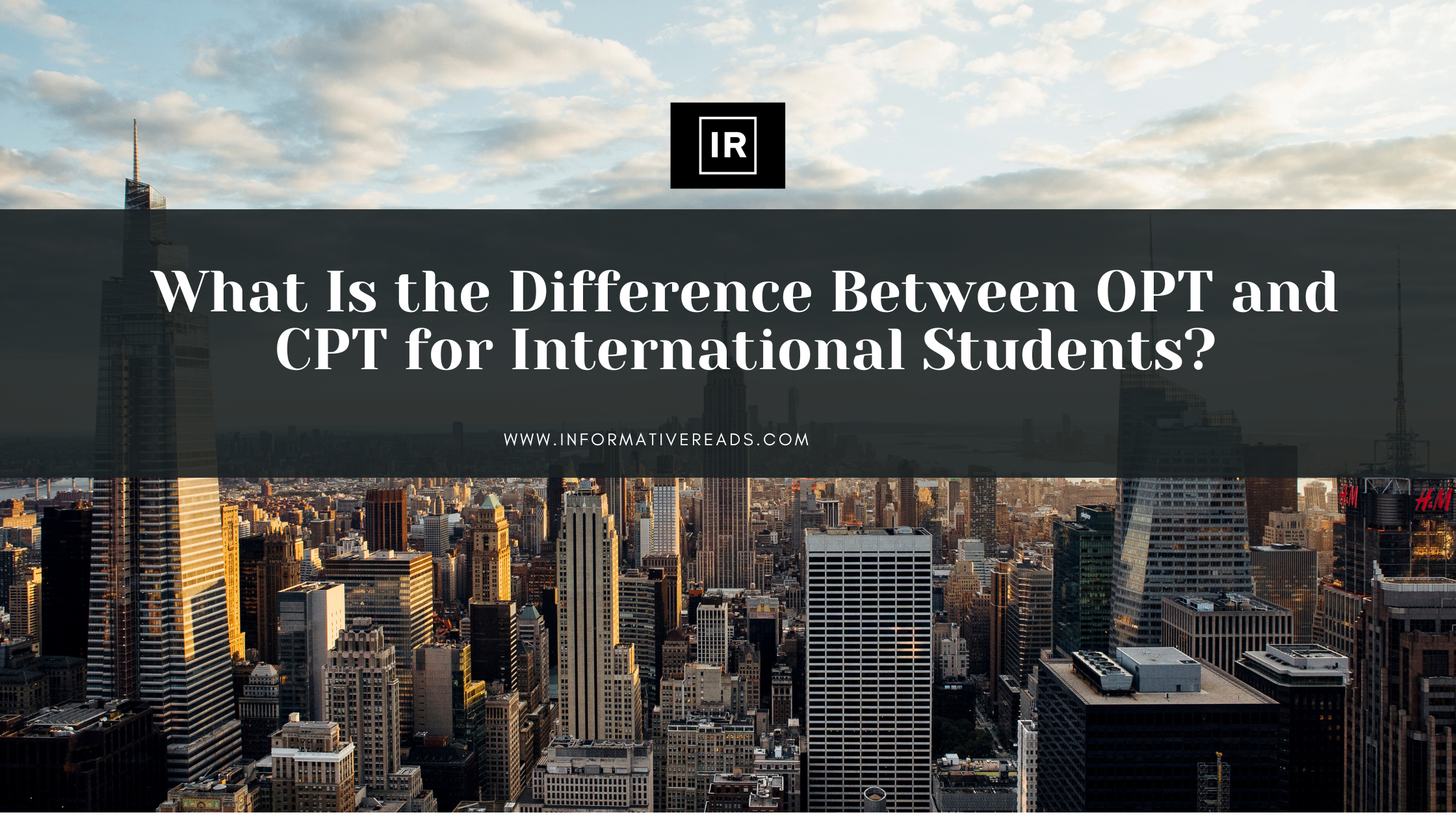What Is the Difference Between OPT and CPT for International Students?
INTRODUCTION International students pursuing education in the United States often seek opportunities to gain practical experience in their field of study. Two popular programs that facilitate this are Optional Practical Training (OPT) and Curricular Practical Training (CPT). Understanding the difference between OPT and CPT is crucial for international students holding a student visa to make…
INTRODUCTION
International students pursuing education in the United States often seek opportunities to gain practical experience in their field of study. Two popular programs that facilitate this are Optional Practical Training (OPT) and Curricular Practical Training (CPT). Understanding the difference between OPT and CPT is crucial for international students holding a student visa to make informed decisions about their work opportunities.
Optional Practical Training (OPT)
OPT is a work authorization program that allows international students to gain valuable experience in their field of study. This program is available to students on an F-1 student visa both during and after completing their academic program. OPT offers flexibility in terms of work options and timing.
Types of OPT
- Pre-completion OPT:
- Available while enrolled in a degree program
- Allows part-time work (up to 20 hours/week) during school
- Permits full-time work during breaks
2. Post-completion OPT:
- Available after degree completion
- Allows full-time work for up to 12 months
- STEM field students may be eligible for a 24-month extension
One of the key advantages of OPT is that it doesn’t need to be a required part of the curriculum. International students have the freedom to choose their workplace, as long as it relates to their major.
Curricular Practical Training (CPT)
CPT is another form of work authorization for international students. It is an alternative work/study, internship, or other type of required practical training. It is more restrictive compared to OPT. The job/work/study should be related to the type of study.
Key Features of CPT
- Must be an integral part of the academic program
- Work or internship must be required for the degree or provide academic credit
- Can be full-time or part-time
- Employer-specific authorization
- Available as early as the first semester, depending on program requirements
Key Differences Between OPT and CPT
Understanding the difference between OPT and CPT is essential for international students to make the most of their student visa opportunities. Here are the main distinctions:
- Curriculum Requirement:
- CPT must be an integral part of the degree curriculum
- OPT doesn’t need to be tied to the curriculum
2. Timing:
- CPT can begin as early as the first semester if required by the program
- OPT generally requires completion of one full academic year before eligibility
3. Job Offer:
- CPT requires a job offer related to the course of study
- OPT doesn’t require a job offer at the time of application
4. Work Flexibility:
- CPT is employer-specific
- OPT offers more freedom in choosing workplaces
5. Duration and Impact:
- Full-time CPT for 12+ months disqualifies students from OPT at the same degree level
- OPT provides up to 12 months of work authorization, with a potential 24-month STEM extension
Difference between OPT and CPT
International students should consider several factors when deciding between OPT and CPT:
- Career Goals: CPT may be better for gaining experience during school, while OPT offers more flexibility post-graduation.
- Field of Study: STEM students might find OPT more attractive due to the potential extension.
- Timing: CPT allows for immediate experience, while OPT is often used after degree completion.
- Program Requirements: Some academic programs may require CPT as part of the curriculum.
In conclusion, the difference between OPT and CPT lies in their purpose, timing, and flexibility. International students should carefully evaluate their options and consult with their Designated School Official (DSO) to determine which program aligns best with their academic and career goals. By understanding these differences, students can make the most of their student visa opportunities and gain valuable work experience in the United States.
Thanks






